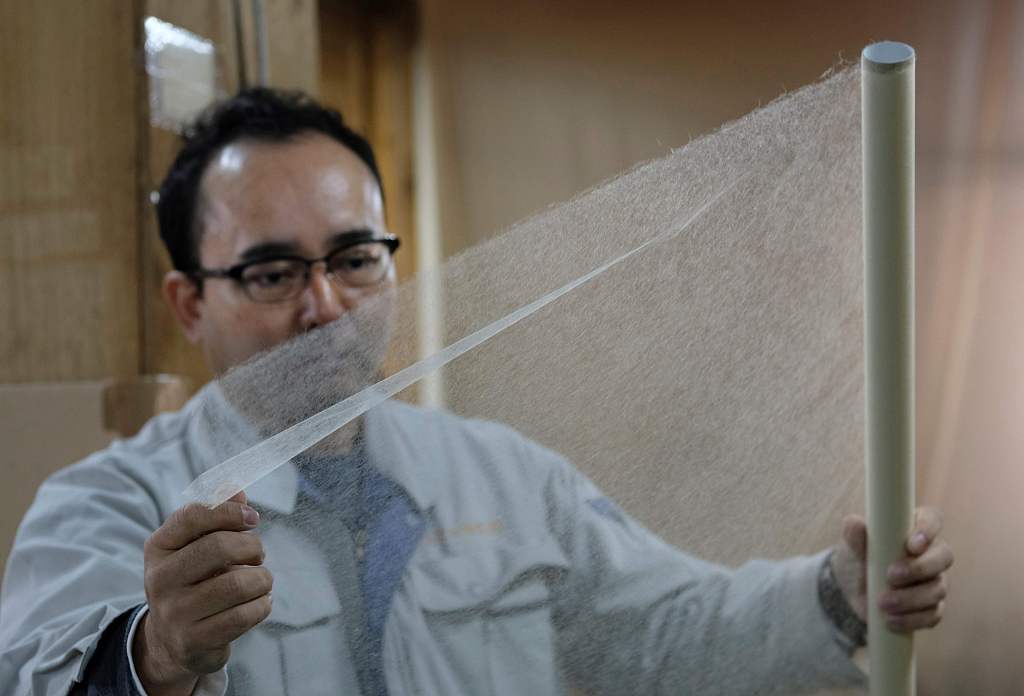Japan's washi paper torn by modern life
China Daily | Updated: 2019-06-22 08:11

HIDAKA, Japan - Once an indispensable part of daily life in Japan, ultrathin washi paper was used for everything from writing and painting to lampshades, umbrellas and sliding doors, but demand has plunged as lifestyles have become more Westernized.
Despite its 1,300-year history and UNESCO Intangible Cultural Heritage status, washi paper is struggling to attract consumers and the market value has dropped by more than 50 percent in the past two decades.
But at a small workshop in western Japan, Hiroyoshi Chinzei, a fourth-generation traditional paper maker, creates washi with a unique purpose that may help revive interest-both at home and abroad.
Chinzei's product, the world's thinnest paper, has helped save historical documents at major museums and libraries-including the Louvre in Paris, the British Museum and Washington's Library of Congress-from decay.
"Washi paper is more flexible and durable" than what Japanese refer to as "Western paper", which disintegrates into tiny pieces when it becomes very old, he said.
The handmade paper is manufactured from plants called kozo, or mulberry, which has fibers that are much longer than materials used for paper in the West such as wood and cotton.
"Old Japanese books from the seventh or eighth century remain in good condition … thanks to the fibers of the kozo plants," the washi maker said at his small factory in Hidaka, a village 640 kilometers southwest of Tokyo.
The papermaking process begins with steaming the kozo plants and peeling off the bark, which is then boiled until soft, while impurities are removed by hand in clear water.
The fibers are then beaten and mixed with glue and water, before being placed on a wooden screen.
This screen is then dipped repeatedly in water with the fibers and shaken to spread the liquid evenly to make a sheet of paper, a technique which requires years to master.
Because washi is hard to break, damaged, old documents can be reinforced by attaching a piece of washi or sandwiching them between two sheets of the paper.
For documents, transparency is key to be able to see the text, meaning the thinner the washi, the better.
Chinzei's washi, a type called tengu-joshi paper also known as "the wings of a mayfly", is 0.02 millimeters thick and weighs 1.6 grams per square meter. This compared to a standard sheet of photocopy paper, which is about 0.09 millimeters thick and weighs 70 grams per square meter.
"It's a mesh-like paper. ... It's as thin as human skin," Chinzei said.
Agence France - Presse
























